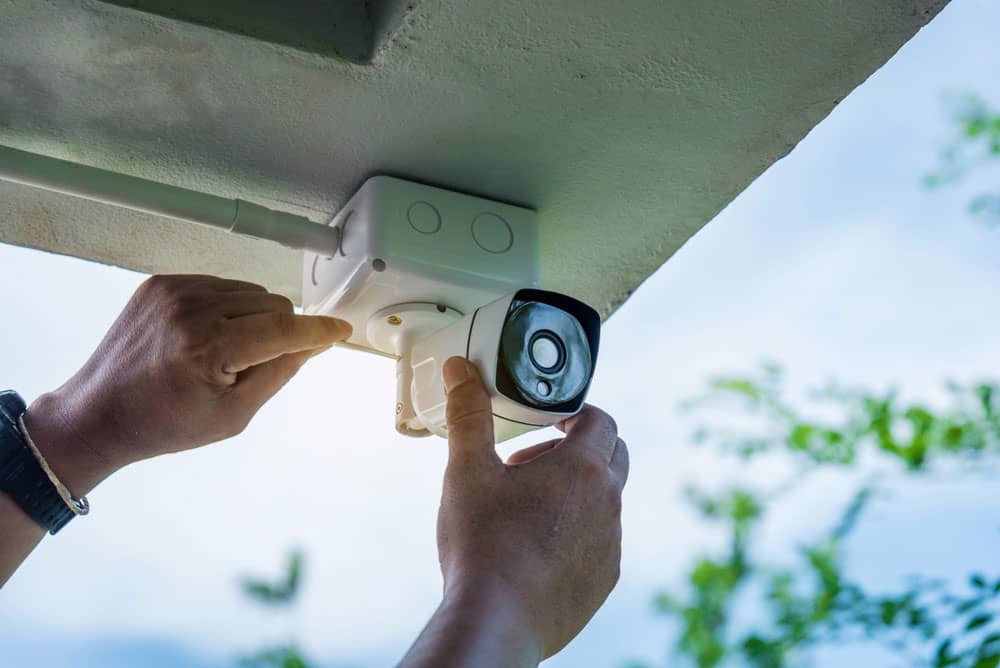When you consider home security, a smart security camera comes to mind. They give an empowering sense of safety and are easy to manage on the go. However, there’s a catch.
If expertly set up, smart cameras can be perhaps your greatest security asset. On the flip side, they can cause problems if not properly set up or managed. These problems are common, and many do not understand the implications until it is too late.
Thus, it’s not enough to install a smart camera; learning the potential risks of having one is quintessential. This knowledge can save you from physical, psychological, and financial damage.
Here are five common security issues you must resolve when installing smart cameras. You will also learn their implications and the practical ways to solve them.
1. Software Malfunction or Live Feed Hijack
While installing smart cameras enhances security infrastructure, it creates various avenues for unauthorized access if the software malfunctions.
Although rare, software malfunction can come from the manufacturer. To illustrate, more than 13,000 people had their home security videos leaked to other people. Meanwhile, the camera manufacturer claimed the security breach was due to a glitch.
Smart cameras record live events and capture sensitive data. Some unethical hackers target these sensitive recordings. They can intrude on your database via the internet and steal private information for entertainment or to sell. Meanwhile, nosy neighbors may hack into your surveillance system for live footage of your daily activities.
Don’t ignore signs that a third party may have access to your smart camera feeds. Subscribe to a secure cloud-based security model or company that can help you prevent security issues with smart cameras.
You may also upgrade to cameras with a physical privacy shutter once you suspect an intrusion into your private feeds. That way, anyone remotely controlling your smart camera lenses will lose audio and visual data.
2. Improper Installation and Camera Peripheral Incompatibility
Smart cameras come with various peripherals to enable functionality during installation. With time, some of these accessories will require replacements.
For some reason, many smart camera owners replace these parts with whatever they can find or afford. As a result, the camera may be incompatible with the new accessories. The incompatibility may reduce the video quality or cause the camera to malfunction.
It’s advisable to buy camera accessories from the same manufacturer or dealer. Likewise, only request the services of an expert technician for all your smart camera installation endeavors.
3. Security Password Breach
Smart surveillance systems are password-enabled, ensuring the owner has authorized access. However, a weak password may expose even the most secure smart camera. According to a survey, nearly 17% of people have correctly guessed someone else’s password.
Modern unethical hackers breach security systems using sophisticated password-generating software. Although not always successful, you increase their odds of breaching your security with a weak password. There is no limit to the extent of damage this security breach can cause.
The first solution is simple: use a strong password. A strong password typically has unique characteristics. They are usually lengthy and in double figures. They must also combine alphabets, numbers, punctuation signs, and other characters. In addition, update your password periodically.
Smart camera service providers who prioritize security create different authentication options. They also help you ascertain your password strength with hints and suggestions. Ensure you get a smart camera with a robust password security protocol.
4. Weak Encryption Protocol
Installing a smart camera encourages sharing video or audio files with fellow house occupants or acquaintances. These shared files can be sensitive, so you want them to reach the intended recipient. However, a smart camera can risk an unauthorized party intercepting the sensitive file.
When you send a message electronically to an address, it goes through encryption. During encryption, a message converts to an unintelligible format before it gets to the recipient. When it reaches the intended address, the recipient receives it in its original format through decryption. This process secures data from breaches and getting into the wrong hands.
Unfortunately, some smart cameras come with weak encryption protocols. Consequently, transferred files become prone to interception. Fortunately, there is a way out of this mess, and it is simple. Avoid security cameras with “too good to be true” prices.
Although not all expensive security gadgets or software guarantee your safety, cheap ones rarely do. Choose smart cameras with a formidable encryption protocol. The most secure ones are not always cheap.
5. Poor Maintenance
Proper maintenance is key to a well-functioning and secure smart surveillance system. Not only does it improve your security, but it also saves you money, as maintenance makes gadgets last longer. It can also alleviate your anxiety, knowing your security system is functional.
Simple solutions can help you keep the smart camera at peak performance. Perform a routine check of its functionality. Ensure the lenses are free from dust, webs, and other obstructions.
Cameras run on batteries, which get weaker with time. Sometimes, the camera’s poor functionality is due to its weak or dead battery. Thus, changing the batteries before they die can do a world of good.
Conclusion
With the ever-increasing crime rate in many regions, it only makes sense to take your security into your own hands. For many, a smart security camera is the answer.
You must first resolve several common issues with smart cameras to enhance your safety infrastructure. Ensure expert installation, change your password periodically, and carefully maintain the gadget.
More importantly, invest in a secure, robust, cloud-based security infrastructure to help you combat cybersecurity threats. Choose your smart camera carefully.
